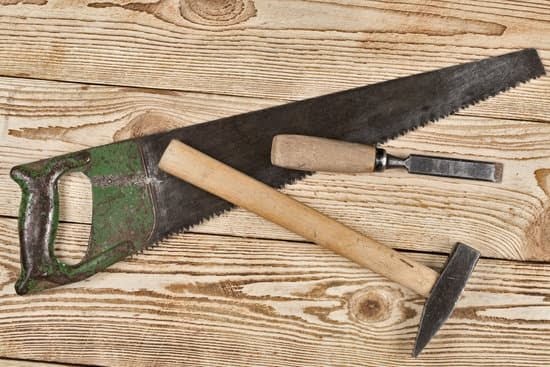Cleaning woodwork is essential for maintaining its longevity and beauty. However, choosing the right cleaner is crucial to ensure effective results without causing any damage. In this article, we will explore various aspects of cleaning woodwork, including different types of woodwork and their specific cleaning needs.
We will also discuss natural cleaners, commercial options, specialty cleaners, DIY solutions, and provide a step-by-step guide to proper woodwork cleaning. By understanding the importance of selecting the appropriate cleaner, you can make informed choices that will help you achieve spotless and long-lasting woodwork.
Woodwork encompasses a wide range of items found in homes such as furniture, trim, and flooring. Each type requires specific cleaning approaches due to differences in their characteristics and finishes. Using incorrect or harsh cleaners can lead to damage by stripping away the protective sealant or discoloring the wood. Therefore, it is vital to consider factors like the type of wood and the finish when choosing a cleaner.
While commercial cleaners are readily available in stores, natural alternatives provide an eco-friendly option with several benefits. Natural ingredients like vinegar, lemon juice, and olive oil can be used to create effective woodwork cleaning solutions at home. We will provide step-by-step instructions on making these solutions as well as highlight their advantages.
By exploring different types of cleaners available for woodwork maintenance and considering their pros and cons, readers can make informed choices tailored to their specific needs. Whether it be removing stubborn stains from furniture or restoring shine to aged flooring, there are specialty cleaners designed for such purposes that we will delve into as well.
Proper cleaning techniques are equally crucial as using the right cleaner so that no damage occurs during the process. In our comprehensive step-by-step guide to cleaning woodwork, we will cover everything from preparing the area for cleaning to selecting appropriate tools and executing gentle motions while cleaning.
Ultimately, this article aims to equip readers with knowledge on how to choose the right cleaner for woodwork and provide insights into effective cleaning techniques. This will enable them to maintain spotless, beautiful woodwork that will stand the test of time.
Different Types of Woodwork and Their Cleaning Needs
Woodwork is a key feature in many homes, adding beauty and warmth to any space. However, it is important to understand that different types of woodwork require specific cleaning approaches to maintain their longevity and appearance. In this section, we will explore the various types of woodwork commonly found in homes and discuss their unique cleaning needs.
One of the most common types of woodwork found in homes is furniture. From tables and chairs to cabinets and bookshelves, furniture made from different types of wood requires specialized care. For example, hardwood furniture may require occasional oiling or waxing to maintain its shine and protect it from drying out. On the other hand, softwood furniture may require regular dusting and conditioning with appropriate cleaners to prevent scratches and wear.
Trim work, such as baseboards, crown molding, window frames, and door frames, is another type of woodwork that can accumulate dust and dirt over time. When it comes to cleaning trim work, it is important to consider the type of finish applied to the wood.
If the trim has a painted or sealed finish, a mild detergent solution can be used for regular cleaning. However, if the trim has an unfinished or natural finish, it is important to avoid excessive moisture contact and instead opt for dry dusting or using a gentle cleaner specifically designed for natural wood.
Flooring made from hardwood or engineered wood is also a significant component of many households. To keep your wooden floors looking their best, it is crucial to adopt proper cleaning techniques. Avoid using excess water when mopping hardwood floors as this can lead to warping or staining. Instead, use a slightly damp mop with a mild wood floor cleaner specifically formulated for use on wooden surfaces.
| Types of Woodwork | Cleaning Needs |
|---|---|
| Furniture | – Hardwood furniture may require occasional oiling or waxing for maintenance and protection
|
| Trim work (baseboards, crown molding, etc.) | – Consider the type of finish on the wood
|
| Flooring (hardwood or engineered wood) | – Avoid excess water when mopping to prevent warping or staining
|
By understanding the unique cleaning needs of different types of woodwork, homeowners can ensure that their beloved pieces are well-maintained and continue to enhance the beauty of their living spaces.
Natural Cleaners for Woodwork
When it comes to cleaning woodwork, using natural cleaners can be a great option. Natural cleaners are not only effective in removing dirt and grime but also gentle on the wood, helping to preserve its beauty and integrity.
Additionally, they are often more environmentally friendly and cost-effective compared to commercial cleaners. In this section, we will explore the benefits of using natural cleaning solutions for woodwork and provide step-by-step instructions on how to make and use them effectively.
The Benefits of Natural Cleaning Solutions
There are several advantages to using natural cleaning solutions for woodwork. Firstly, natural cleaners are typically free from harsh chemicals that can potentially damage the surface of the wood or strip away its protective finish. By opting for natural ingredients like vinegar, lemon juice, or olive oil, you can effectively clean your woodwork without worrying about any adverse effects.
Secondly, natural cleaners are environmentally friendly because they do not contain harmful substances that can pollute waterways or contribute to air pollution when used indoors. This makes them a safer choice for both your health and the environment.
Common Natural Cleaners for Woodwork
There are many common household items that can be used as natural cleaners for woodwork. Vinegar is one such ingredient that is highly versatile and effective at removing dirt and grime. To create a vinegar-based wood cleaner, simply mix equal parts white vinegar and water in a spray bottle. You can apply this solution directly onto the wood surfaces or dampen a soft cloth with it.
Lemon juice is another excellent natural cleaner for woodwork. Its acidic properties help break down grease and remove stains without damaging the wood’s surface. To make a lemon juice cleaner, mix freshly squeezed lemon juice with an equal amount of water in a spray bottle or bowl. Apply it to the wood surfaces using a soft cloth.
Olive oil is not only a great natural cleaner for woodwork, but it also helps to nourish and condition the wood. To create an olive oil-based cleaner, mix three parts olive oil with one part lemon juice or vinegar in a spray bottle. Spray the mixture onto the wood surfaces and wipe it clean using a soft cloth.
Using Natural Cleaners Effectively
To use natural cleaners effectively on woodwork, always remember to test them on a small, inconspicuous area first to ensure they do not cause any discoloration or damage. Once you have confirmed that the cleaner is safe to use, apply it sparingly and gently scrub the surface using a soft cloth or brush. Avoid excessive scrubbing or using abrasive materials as they can scratch or ruin the finish of the wood.
Commercial Wood Cleaners
When it comes to cleaning woodwork, there is a wide range of commercial wood cleaners available in the market. Understanding the different options can help you make an informed decision and choose the best cleaner for your specific needs. Here, we will introduce you to some commercially available wood cleaners, discussing their types, formulations, and pros and cons.
Sprays
Spray wood cleaners are convenient and easy to use. They come in ready-to-use bottles and can be sprayed directly onto the wood surface. These cleaners often contain gentle solvents or surfactants that effectively remove dirt and grime without harming the wood finish. They are suitable for regular maintenance cleaning or quick touch-ups. However, sprays may not be as effective on tough stains or deeply ingrained dirt.
Wipes
Wood cleaning wipes are another popular option for cleaning woodwork. These pre-moistened wipes are pre-soaked with a cleaning solution, allowing you to quickly clean furniture, trim, or flooring without any additional tools or equipment. Wood cleaning wipes are convenient for small areas or spot-cleaning tasks. However, they might not provide thorough cleaning for larger surfaces or heavily soiled areas.
Concentrated Solutions
Concentrated wood cleaners offer versatility and cost-effectiveness. They usually come in liquid form that needs to be diluted with water before use. These solutions allow you to adjust the strength of the cleaner according to your specific cleaning needs. Concentrated solutions work well for deep-cleaning tasks where more powerful cleaning agents might be required. However, they require careful preparation and dilution before using them on delicate or sensitive wood surfaces.
It’s important to weigh the pros and cons of each type of commercial wood cleaner based on your specific woodwork requirements before making a purchase decision. Remember to always follow the instructions provided by the manufacturer and test the cleaner on a small, inconspicuous area before applying it to the entire wood surface. By choosing the right commercial wood cleaner, you can effectively clean your woodwork while preserving its beauty and longevity.
Specialty Cleaners for Specific Woodwork Needs
When it comes to cleaning woodwork, there are instances where regular cleaners may not be sufficient to address specific needs. Whether you’re dealing with stubborn stains on furniture or trying to restore shine to aged flooring, specialty cleaners can provide targeted solutions for these unique challenges. In this section, we will discuss the different types of specialty cleaners available and provide instructions on how to use them appropriately.
One common challenge in maintaining wood furniture is removing stubborn stains. Accidental spills or deep-set stains may require more than just a regular cleaner. Wood furniture stain removers are specifically formulated to penetrate the surface and lift away stubborn marks without damaging the wood itself.
These specialty cleaners often come in gel or paste form, making them easy to apply directly onto the affected area. Following the instructions on the product label is crucial to ensure effective stain removal while protecting the integrity of the wood.
For those looking to restore the shine and luster of aged wooden flooring, floor polish provides an ideal solution. Depending on the type of finish your flooring has, there are specialized polishes available that can effectively renew its appearance.
Before applying floor polish, it is important to thoroughly clean the floor first and make sure it is free from dust and debris. Applying a thin coat of polish with a clean mop or applicator pad will help revive and protect your wooden flooring.
In addition to stain removers and floor polishes, there are other specialty cleaners designed for specific woodwork needs. Mold and mildew removers are effective for combating fungal growth on wood surfaces in high-moisture areas such as bathrooms or basements. Restorative oils can be used to revitalize dry or weathered wood finishes, providing nourishment and enhancing their natural beauty.
Overall, specialty cleaners offer targeted solutions for unique cleaning challenges associated with different types of woodwork. It is important to read product labels carefully, follow instructions diligently, and test the cleaner on a small, inconspicuous area before applying it to the entire woodwork surface. By using specialty cleaners appropriately, you can tackle specific cleaning needs and maintain the beauty of your woodwork for years to come.
| Specialty Cleaner | Application |
|---|---|
| Wood Furniture Stain Remover | Gel or paste form, directly apply onto affected area |
| Floor Polish | Clean floor thoroughly, apply thin coat with mop or applicator pad |
| Mold and Mildew Remover | Spray or wipe onto affected area, follow product instructions for dwell time and rinsing |
| Restorative Oils | Apply with soft cloth, buff away excess after allowing it to penetrate the wood |
DIY Woodwork Cleaning Solutions
Woodwork cleaning solutions made at home can be a cost-effective and eco-friendly alternative to commercial cleaners. Not only are they easy to make, but they also provide effective cleaning while being gentle on the woodwork. Here are a few DIY woodwork cleaning solutions that you can try:
Vinegar Solution
One of the most popular natural cleaners for woodwork is a vinegar solution. To make this solution, mix equal parts of white vinegar and water in a spray bottle. Shake well to combine the ingredients. This mixture can be used to clean various types of woodwork, including furniture, trim, and flooring. Simply spray the solution onto a soft cloth or directly onto the surface and wipe clean.
Lemon Juice Solution
Another great DIY option is a lemon juice solution. Mix one part lemon juice with two parts olive oil in a small bowl. Dip a soft cloth into this mixture and gently rub it onto the wood surfaces. The lemon juice acts as a natural disinfectant while the olive oil helps nourish and polish the wood.
Baking Soda Paste
For tough stains or dirt buildup, a baking soda paste can come in handy. Mix baking soda with water until it forms a thick paste. Apply the paste to the affected areas of your woodwork using a soft cloth or brush. Gently scrub in circular motions and then wipe away with a damp cloth.
It’s important to keep in mind that these homemade solutions are not suitable for all types of woodwork or finishes. Before using any DIY cleaner, it’s always recommended to test it on an inconspicuous area first to ensure that it doesn’t cause any damage or discoloration.
Using homemade cleaning solutions not only keeps your woodwork looking its best but also reduces exposure to harsh chemicals found in many commercial cleaners. By making informed choices and opting for DIY cleaning solutions, you can ensure that your woodwork remains clean, polished, and in great condition for years to come.
Step-by-Step Guide to Cleaning Woodwork
Cleaning woodwork properly is essential for maintaining its longevity and beauty. Whether it’s furniture, trim, or flooring, using the right techniques and cleaners is crucial to avoid damage. In this section, we will provide a comprehensive step-by-step guide on how to clean woodwork effectively.
Before you begin cleaning your woodwork, it’s important to prepare the area. Remove any items that could be damaged by the cleaning solution or get in the way during the process. Cover nearby surfaces and flooring with protective materials to avoid accidental spills or splatters.
Next, select the right tools for the job. Soft cloths are generally recommended for dusting or wiping down woodwork. If there are crevices or intricate details that need cleaning, consider using a soft brush to access those hard-to-reach areas.
Now it’s time to choose your cleaner based on the type of woodwork you have and your personal preferences. Natural cleaners like vinegar, lemon juice, and olive oil can be effective options. To make a natural cleaner with vinegar, mix equal parts vinegar and water in a spray bottle. For stubborn stains on wood furniture, create a paste by mixing lemon juice and baking soda.
If you prefer commercially available wood cleaners, there are various types and formulations to choose from – sprays, wipes, or concentrated solutions. Be sure to read and follow the instructions provided by the manufacturer for optimal results.
Once you have chosen your cleaner, it’s advisable to do a small test patch on an inconspicuous area of the woodwork before applying it more broadly. This will help ensure that the cleaner doesn’t cause any adverse effects or damage to your woodwork.
When applying the cleaner to your woodwork, remember to use gentle motions and avoid scrubbing too vigorously as this can cause scratches or remove finish/sealant. Work in small sections at a time and wipe away excess moisture promptly.
After you have finished cleaning your woodwork, it’s important to take steps to maintain and protect it. Consider treating the wood with oil, wax, or a protective sealant to help preserve its appearance and durability. Establishing a regular maintenance routine will help extend the life and beauty of your woodwork.
By following this step-by-step guide, you can ensure that your woodwork remains clean and well-maintained. Cleaning woodwork properly is an investment in its longevity and aesthetics, so take the time to make informed choices and follow good cleaning practices.
Maintaining and Protecting Woodwork After Cleaning
Maintaining and protecting woodwork after cleaning is crucial for preserving its beauty and durability. Once you have carefully cleaned your woodwork using the appropriate cleaner, it’s important to implement post-cleaning care to keep it looking pristine for years to come. This section will provide guidance on how to maintain and protect your woodwork effectively.
One of the key aspects of maintaining woodwork is considering appropriate treatments based on the type of wood and the finish. Oiling is a common method used to nourish and protect wooden surfaces. Applying a thin layer of oil, such as linseed oil or tung oil, can help prevent drying, cracking, and warping while enhancing the natural color of the wood.
Waxing is also beneficial for adding an extra layer of protection and shine to your woodwork. Beeswax or carnauba wax are popular choices for this purpose.
In addition to oiling and waxing, applying a protective sealant can provide long-lasting protection against stains, spills, and general wear and tear. There are various sealant options available, including polyurethane, shellac, or lacquer. It’s important to choose a sealant that is compatible with your specific type of woodwork and follow the manufacturer’s instructions for application.
To establish a regular maintenance routine for your woodwork, consider these tips:
- Regularly dust your woodwork using a soft cloth or feather duster to remove loose dirt and particles.
- Avoid placing hot objects directly on wooden surfaces as it can cause heat damage.
- Use coasters or placemats under glasses, mugs, and other items to protect against moisture rings.
- Wipe up spills immediately with a clean cloth or paper towel.
- Avoid exposing your woodwork to direct sunlight for extended periods as it can fade the color.
- Inspect your woodwork regularly for any signs of damage or wear. Address any issues promptly to prevent further deterioration.
By following these maintenance tips and implementing appropriate treatments, you can ensure the longevity and beauty of your woodwork. With proper care, your woodwork will continue to enhance the ambiance of your home for many years to come.
Conclusion
In conclusion, maintaining and cleaning woodwork is a crucial aspect of preserving its longevity and beauty. It is vital to choose the right cleaner for different types of woodwork, as using incorrect or harsh cleaners can cause significant damage. Understanding the specific cleaning needs of different types of wood and considering the finish and sealant are essential in selecting the appropriate cleaner.
Natural cleaners provide a safe and effective option for cleaning woodwork. Ingredients such as vinegar, lemon juice, and olive oil offer gentle yet efficient cleaning properties. By following simple step-by-step instructions, readers can create their natural cleaners that are cost-effective and environmentally friendly.
Alternatively, commercially available wood cleaners provide convenience and efficiency. Readers should be aware of the different types and formulations available, including sprays, wipes, and concentrated solutions. Each type has its pros and cons that should be considered based on individual preferences and specific cleaning requirements.
Specialty cleaners cater to unique challenges faced when cleaning specific woodwork items. Whether it’s removing stains from furniture or restoring shine to aged flooring, there are specialty cleaners designed for these specific needs. Readers can follow instructions provided to use these products effectively.
After successfully cleaning the woodwork, post-cleaning care is crucial for maintaining its beauty. Treating the woodwork with appropriate methods such as oiling, waxing, or applying protective sealants will help protect it against environmental factors that may cause damage over time. Establishing a regular maintenance routine is also recommended to extend the life and beauty of woodwork.
By prioritizing informed choices in selecting suitable cleaners for their woodwork based on their unique needs, readers can enjoy spotless results while ensuring its longevity. Putting this knowledge into practice by following the step-by-step guide provided will lead to well-maintained woodwork that stands the test of time.
Frequently Asked Questions
What is the best product to clean woodwork with?
When it comes to cleaning woodwork, the best product to use would typically be a gentle and non-abrasive cleaner specifically designed for wood surfaces. There are several commercially available wood cleaners that can effectively remove dirt, grime, and even stains without causing damage to the wood finish or leaving behind any residue.
These cleaners usually come in liquid or spray form and can be applied with a soft cloth or sponge. It’s important to follow the instructions provided by the manufacturer and test the cleaner on a small, inconspicuous area before applying it to the entire woodwork.
What is the best cleaning solution for wood trim?
The ideal cleaning solution for wood trim would largely depend on factors such as the type of finish on the trim, its condition, and any specific issues like heavy soiling or stubborn stains. However, in general, a mild solution of warm water mixed with a small amount of dish soap can work well for regular cleaning of wood trim. This gentle solution can effectively remove dust, fingerprints, and light dirt without being harsh on the wood surface.
When using this solution, it’s important to apply it sparingly with a soft cloth or sponge rather than saturating the trim. After cleaning, it’s essential to thoroughly dry the woodwork to prevent water from penetrating into the trim.
How do you clean dirty woodwork?
To clean dirty woodwork, start by removing loose dust and debris by using a soft brush or vacuum cleaner fitted with a brush attachment. This will help prevent scratching the surface during further cleaning. Afterward, create a mixture of warm water and mild dish soap or a dedicated wood cleaner following the manufacturer’s instructions if needed (ensure any harsh chemicals are avoided). Gently dip a soft cloth into this solution and wring out excess moisture to avoid saturating the woodwork.
Wipe down all surfaces of the dirty woodwork systematically without applying excessive pressure since this might damage delicate finishes or cause scratches. Rinse the cloth frequently as it becomes soiled and change the cleaning solution if necessary. Finally, use a clean, dry cloth to remove any residual moisture from the woodwork and allow it to air dry completely before applying any wax or polish if desired.

Hi everyone! I’m a woodworker and blogger, and this is my woodworking blog. In my blog, I share tips and tricks for woodworkers of all skill levels, as well as project ideas that you can try yourself.





